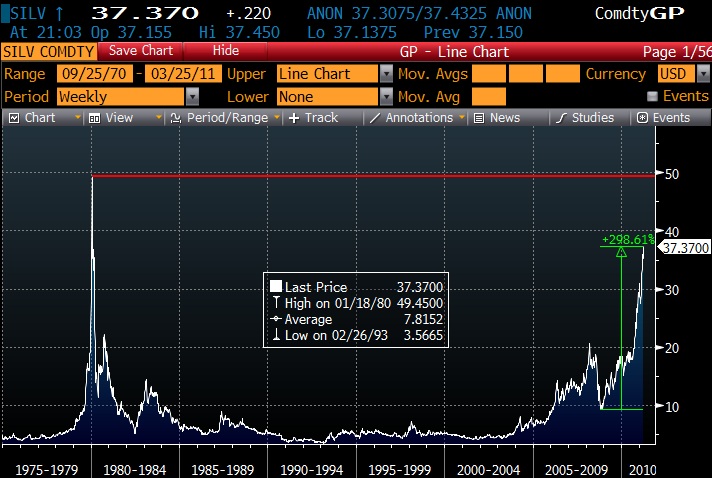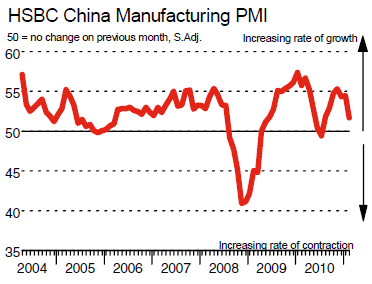- Compounding: Why don't people get it?
If you must ignore everything else in this post, just look at the first rule and table in the link. Especially if you're young -- I can say with some certainty it will be the only undeniably important thing that you ever read on this blog! Over the last few weeks, Our Man has been decrying the foolishness of youth after talking with some young colleagues/acquaintances about saving (they don't want to). Now Our Man isn't here to give you a lecture (or even to show you some basic maths!) so instead he's going to give you a link to an article written by Richard Russell that will do it for him. Suffice to say, if there's only one financial lesson Our Man could pass on to his & Mrs OM's (hypothetical) kids it'd be this one. (Dow Theory Letters)
- What Barofsky said!
Neil Barofsky is one of the few civil servants or politicians to have been an unmitigated (and I'd say unarguable, but there's always someone who'll disagree) success in actually doing his job over the last few years. Thus, it goes without saying that on the day he was leaving his job as the special investigator general of the government's bailout program, he does what he did throughout his tenure; call-out the Treasury/government (and the Banks) for the failure that is TARP. (New York Times)
- The Blind Man who Taught himself to see
Daniel Kish has been blind since he was a year-old, yet navigates the wilderness alone, can recognize a building from 1,000 feet away and knows to mock his interviewer's bad parallel parking. Here's how he learned to see by using sound, and the non-profit he's set-up to help others do the same. (Men's Journal)
If you must ignore everything else in this post, just look at the first rule and table in the link. Especially if you're young -- I can say with some certainty it will be the only undeniably important thing that you ever read on this blog! Over the last few weeks, Our Man has been decrying the foolishness of youth after talking with some young colleagues/acquaintances about saving (they don't want to). Now Our Man isn't here to give you a lecture (or even to show you some basic maths!) so instead he's going to give you a link to an article written by Richard Russell that will do it for him. Suffice to say, if there's only one financial lesson Our Man could pass on to his & Mrs OM's (hypothetical) kids it'd be this one. (Dow Theory Letters)
- What Barofsky said!
Neil Barofsky is one of the few civil servants or politicians to have been an unmitigated (and I'd say unarguable, but there's always someone who'll disagree) success in actually doing his job over the last few years. Thus, it goes without saying that on the day he was leaving his job as the special investigator general of the government's bailout program, he does what he did throughout his tenure; call-out the Treasury/government (and the Banks) for the failure that is TARP. (New York Times)
- The Blind Man who Taught himself to see
Daniel Kish has been blind since he was a year-old, yet navigates the wilderness alone, can recognize a building from 1,000 feet away and knows to mock his interviewer's bad parallel parking. Here's how he learned to see by using sound, and the non-profit he's set-up to help others do the same. (Men's Journal)
- Solitude and Leadership
Of all the articles that I’ve linked to, this speech to the plebe class at West Point, by William Deresiewicz, is my favourite. Why? Because it touches on a number of things that I believe and find interesting; how we conflate leadership with aptitude, achievement and/or excellence, how the educational system (especially the higher educational system) claims to train leaders but instead produces masterful technocrats, and how our bureaucracies (be they government, corporate, educational or other) reward conventional wisdom and a talent for maneuvering over almost anything else. However, most of all, because it’s a speech that talks about the importance of thinking for yourself, and coming to your own decisions independent of crowd. (The American Scholar)
- A Declaration of Cyber-War
Remember Stuxnext - the virus that apparently crippled Iran's nuclear program last year. Here's an in-depth article about what went on in the software-security world as they tried to work out who sent it and what it was targeted on, and more broadly how the face of warfare is changing once more (Vanity Fair)
- Princeton vs. UCLA; how an Ivy League team beat the defending NCAA Champs!
Here's Sean Gregory (at the time he was bench-player for Princeton) writing his reflections on Princeton vs UCLA at the big dance, in what became legendary coach Pete Carril's legacy-defining penultimate game. It's also a great excuse to include my favourite NCAA moment; Our Man was in the upper reaches of the arena, sandwiched between (the future) Mrs OM and the good friend who introduced us, when this happened! Hoya Saxa! (Time Magazine)
- When you let artists play with household objects and wire you get...stories?
Photographer Terry Border was let loose with some every-day household objects and some wire...and came up with some photos telling their own interesting stories. They were so good he has a book out and a blog that he updates with new ones. (Big Picture and Bent Objects blog)
- Princeton vs. UCLA; how an Ivy League team beat the defending NCAA Champs!
Here's Sean Gregory (at the time he was bench-player for Princeton) writing his reflections on Princeton vs UCLA at the big dance, in what became legendary coach Pete Carril's legacy-defining penultimate game. It's also a great excuse to include my favourite NCAA moment; Our Man was in the upper reaches of the arena, sandwiched between (the future) Mrs OM and the good friend who introduced us, when this happened! Hoya Saxa! (Time Magazine)
- When you let artists play with household objects and wire you get...stories?
Photographer Terry Border was let loose with some every-day household objects and some wire...and came up with some photos telling their own interesting stories. They were so good he has a book out and a blog that he updates with new ones. (Big Picture and Bent Objects blog)







